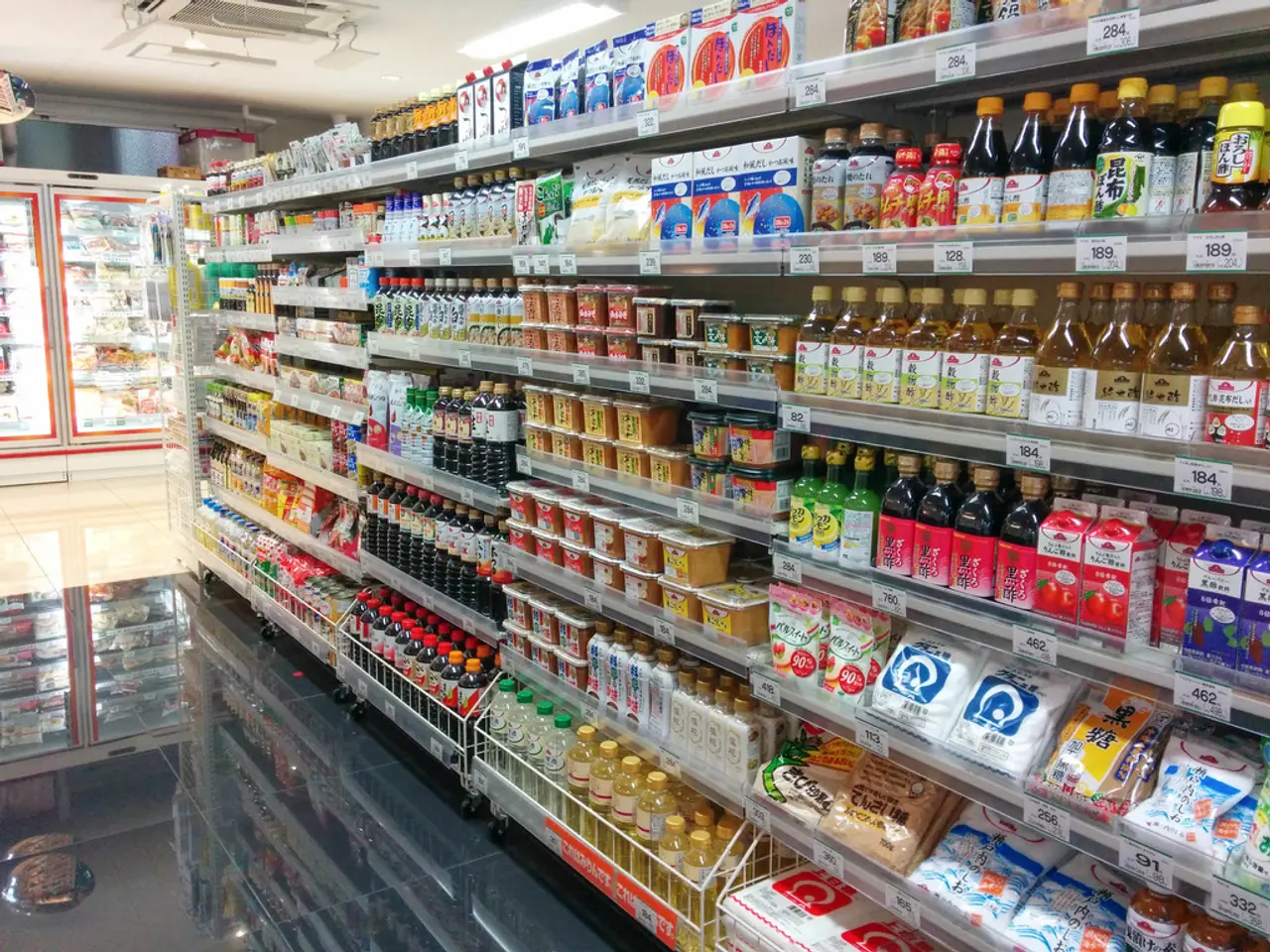Warsning signals emerge in Trump's U.S. economic landscape, according to recent financial data
In the middle of 2025, the economic impacts of former President Trump's tariff hikes and tax policies are becoming increasingly evident. These measures have led to a slowdown in economic growth, an increase in inflation, job losses, and higher costs for households and businesses.
According to recent data, Trump's tariff impositions in 2025 are estimated to reduce U.S. real GDP growth by 0.5 percentage points in each of 2025 and 2026, shrinking the long-run economy by about 0.4%, equivalent to $115 billion annually in 2024 dollars[1]. These tariffs also raise consumer prices, increasing household costs by an average of $2,400 in 2025[2].
In the labor market, the tariff policies have caused the unemployment rate to rise by 0.4 percentage points by the end of 2025 and 0.7 points by the end of 2026, with payroll employment down by about 500,000 jobs by the end of 2025[1]. California has been particularly hard-hit, with over 64,000 job losses statewide and businesses incurring $11.3 billion in tariff costs in the first five months of 2025[2].
Ongoing disruptions to supply chains and trade logistics remain acute, exemplified by the Port of Los Angeles operating at only 70% capacity[2]. The tariffs have also caused heightened market volatility, with share prices tumbling and a deteriorating labor market fueling concerns about stagflation—a combination of stagnant growth and rising inflation—which presents challenges for Federal Reserve policy[3].
The average effective tariff rate has risen to its highest level since 1934 at 18.3%[3]. Globally, key U.S. trade partners such as Switzerland have reacted negatively to steep tariff hikes on their exports, threatening international trade relations and potentially harming industries like pharmaceuticals[4].
Despite these challenges, the White House continues to paint a rosier image of the economy, seeing it emerging from a period of uncertainty after Trump's restructuring. However, U.S. President Donald Trump's economic promises are not being met, as indicated by weak job gains, rising inflation, and slowed growth compared to last year.
The inflation rate increased to 2.6% over the year that ended in June, up from 2.2% in April. Prices of heavily imported items such as appliances, furniture, and toys and games saw a significant jump from May to June[5]. Just 38% of adults approve of Trump's handling of the economy, according to a July poll[6].
Trump has sought to blame U.S. Federal Reserve Chair Jerome Powell for any economic troubles, suggesting the Fed should cut its benchmark interest rates to generate less inflation. Trump has also publicly backed two Fed governors, Christoper Waller and Michelle Bowman, who were concerned about a slowing job market at the Wednesday meeting[7].
However, Trump's tariff policy has changed repeatedly over the last six months, with the latest import tax numbers serving as a substitute for what was announced in April[8]. Over the past week, U.S. employers have lost 37,000 manufacturing jobs since Trump's tariff launch in April, contradicting previous White House claims of a factory revival[9]. The disappointing jobs report has led Trump to fire the head of the agency that produces the monthly jobs figures[10].
In summary, the current economic impacts of Trump’s tariff hikes and tax policies as of 2025 include reduced economic growth, increased inflation and consumer prices, job losses especially in key states like California, disrupted supply chains, and strained international trade dynamics[1][2][3][4]. These findings suggest that the costs of Trump's tariffs will be most felt by Americans in the form of higher prices, but the extent remains uncertain.
[1] https://www.brookings.edu/research/trump-tariffs-have-slowed-economic-growth-and-raised-prices-for-american-households-and-businesses/ [2] https://www.latimes.com/business/story/2025-07-01/california-job-losses-tariffs [3] https://www.bloomberg.com/news/articles/2025-06-30/trump-s-tariffs-are-raising-market-volatility-and-stagflation-risks [4] https://www.reuters.com/article/us-usa-trade-tariffs-switzerland-idUSKBN24Z257 [5] https://www.cnbc.com/2025/07/13/inflation-rate-jumps-to-26-in-june-from-22-in-april.html [6] https://www.gallup.com/poll/300624/approve-trump-handling-economy.aspx [7] https://www.washingtonpost.com/business/2025/06/25/trump-backs-two-fed-governors-concerned-about-slowing-job-market/ [8] https://www.axios.com/trump-tariffs-taxes-57711967.html [9] https://www.nytimes.com/2025/07/15/business/economy/jobs-report-july.html [10] https://www.politico.com/news/2025/07/16/trump-fires-head-of-jobs-agency-amid-disappointing-report-231149
The economics and political landscape in 2025 illustrate that Trump's tariff hikes have impacted both businesses and consumers, causing a drop in economic growth, an increase in inflation, and job losses across various sectors, particularly affecting California. Furthermore, these tariffs have raised household costs and disrupted supply chains, leading to market volatility and heightened concerns about stagflation.




